Designated Cultural Districts
| Name | Region |
|---|---|
| Amherst Center Cultural District | Western |

Location: Amherst Description: There's no doubt that you're at the center of it all when you visit here, with plenty of options for every interest. Literary lovers will enjoy the Emily Dickinson Museum, Amherst Books, and the Amherst Poetry Festival, while film buffs can catch independent and feature films at the Amherst Cinema Arts Center. Admirers of art can find it around every corner -- at the Mead Art Museum, in Judie's Restaurant, on muraled building walls throughout town, as well as in numerous galleries scattered throughout the district. Amherst has a wealth of history and historical assets too, which can be explored at the Amherst History Museum, in the Jones Library Archives, by strolling through West Cemetery, or visiting the historic homes of Henry Hills and the Amherst Woman's Club. Picnickers and park-goers can relax in one of the three district parks -- Amherst Town Common, Kendrick Park, and Sweetser Park, which frequently feature live music, festivals, book sales and bazaars.Hungry or need to slake your thirst? Foodies fare well here with unique restaurants like Fresh Side, The Lumberyard, Black Sheep Cafe, Amherst Coffee, and High Horse Brewing, among many others. The district is flanked by two distinct educational institutions -- UMass Amherst and Amherst College -- and is centrally located in the beautiful Pioneer Valley. |
|
| Aquinnah Circle Cultural & Historic District | Southeast |
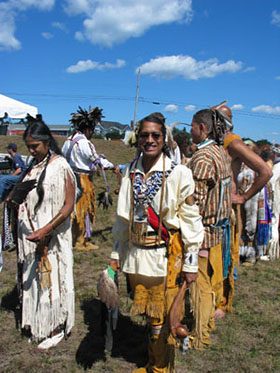
Location: Aquinnah Description: Before there was even a paved road in town, the Aquinnah Circle has been a destination for tourists traveling to Martha's Vineyard. From far and wide people have come to see the vibrant colored clay cliffs, meet the Wampanoag (American Indian) residents, and admire the famous Gay Head Lighthouse.Aquinnah Circle is located in the small town of Aquinnah (formerly known as Gay Head) on Martha's Vineyard Island. The town is homeland to the Wampanoag Tribe of Gay Head (Aquinnah), one of only two federally recognized tribes in the Commonwealth. Aquinnah has been a refuge place for the island's original inhabitants, and they have a long tradition of welcoming others that might not have had a place elsewhere. To this day, the Town's residents celebrate the unique character of those that choose to live here, surrounded by immense beauty, yet somewhat removed from many modern amenities.Thousands of people come to experience the tranquil beauty of the Circle and surrounding area each year. The most popular attraction is the cliff overlook, which is a must for any Vineyard visitor, especially those also seeking a spectacular evening sunset. For adventurous types, there are hiking trails leading to the unparalleled Moshup Beach, as well as along the top of the cliffs, offering incredible scenic views of Vineyard Sound, the surrounding islands, and all the marine activity going on. |
|
| Arlington Cultural District | Greater Boston |
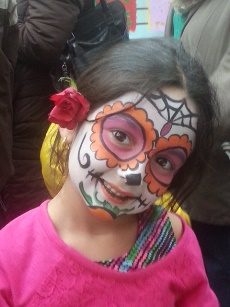
Location: Arlington Description: The Arlington Cultural District is a hub for arts, culture, dining and entertainment. Home to revolutionaries, artists, and entrepreneurs throughout its history, the Town of Arlington and most specifically its Cultural District, is a lively, bustling area supported by an active and welcoming community. The District spans a walkable stretch along Massachusetts Avenue from East Arlington's Capitol Square to the Civic Block in Arlington Center. East Arlington is a diverse, dense neighborhood with art galleries, a movie theatre, and unique shops nestled alongside generous open space at nearby Spy Pond.Arlington Center boasts a wide array of cultural assets like the Arlington Center for the Arts, the Cyrus Dallin Museum, the Old Burying Ground, Uncle Sam Plaza and the historic Jason Russell House. Dozens of restaurants, cafes, retail shops and the Regent Theatre keep this area busy at all hours of the day. The Cultural District supports year-round creative arts and entertainment activities such as our very own Porchfest, Romancing the Square, Feast of the East, Arlington Alive Arts Festival, Arlington Town Day, Taste of Arlington and many more. Bound together by both Mass Ave and the Minuteman Bikeway, the Arlington Cultural District showcases the Town's natural beauty, history, and contemporary arts and culture. You can ride or walk the Minuteman Bikeway, enjoy public art produced by our thriving artist community, visit the Olmsted-designed Town Hall Memorial Garden and the beautiful reading room of the adjacent Robbins Library. Catch a live performance or film at one of our two independent theaters, drop in for a craft at Artbeat Creativity Store, a contemporary artist exhibition at 13 Forest Gallery or The Artful Heart Gallery, or a docent-led tour describing the life and work of Arlington's renowned 19th century sculptor Cyrus Dallin at the Cyrus Dallin Museum. |
|
| Barnstable Village Cultural District | Southeast |
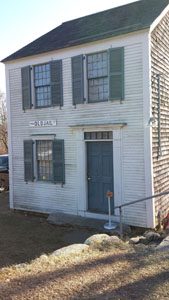
Location: Barnstable Description: It's history revisited in the Barnstable Village Cultural District, a charming seaside village on the north side of Barnstable. A balance between colonial history and 21st century flair, the district is filled with historical buildings, quaint shops, working artist studios and galleries, locally-owned shops, musical and theater groups, and restaurants. The district is steps away from Barnstable Harbor, a spectacular backdrop with its working waterfront and panoramic views of Sandy Neck Beach and Lighthouse. From its quaint downtown to active harbor, the energy and excitement in the village is palpable year round. Visitors can learn about the harbor and beaches on an eco-tour or whale watcher tour where spotting whales along with seals and dolphins is always a treat. Step back in time on a self-guided walking tour of sea captain and patriot homes from the 1600's; meet Smithy, a working blacksmith who will share stories about the inmates at the old jail and U.S. Customs House, now home to the U.S. Coast Guard Heritage Museum. Take a guided nighttime ghost walk through the centuries-old graveyard if you dare, led by storytellers from Tales of Cape Cod; or find your genealogical history with archives dating back to colonial times at Sturgis Library, the oldest library building in the United States. A historic village with modern twist, there is plenty to do in the Barnstable Village Cultural District from community theater at Barnstable Comedy Club, outdoor concerts, lectures and gallery tours; chatting with the local potter while he creates right before your eyes, or taking part in one of several festivals. Throughout the year the district provides a full day of arts and cultural attractions, experiences, and memories. |
|
| Bedford Cultural District | Metrowest |
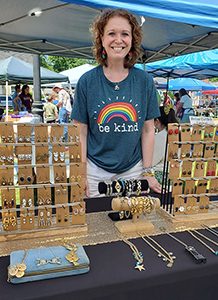
Location: Bedford Description: Bedford's District became part of American Revolutionary History when in April 19, 1775, Bedford Minutemen gathered in Fitch Tavern before setting off to fight the British Redcoats in the Battle of Concord at North Road. The Bedford Flag is reputed to have been flown in this battle, which is now on display at the Bedford Public Library as the oldest surviving intact battle flag in the United States. The Town's historic character is a main feature of the District in large part through the Town's preservation efforts of the Depot Rail Road Terminal and the many historic homes from the colonial, Victorian and Edwardian eras. Bedford's history is also celebrated through public art, historic tours, and public events, such as the hugely popular annual Pole capping event by Bedford Minutemen reenactors. The Town has committed to creating a dedicated History Museum to further celebrate the Town's history. Complementing the Town's historic preservation efforts is an exciting synergy between Bedford's historic railroad network and a cluster of artist and media production studios near the Minuteman Bikeway and Narrow Gauge Rail Trail. The District is home to glassmakers, sculptors, musical instrument makers, video and television producers, painters, and potters. The District is also comprised of retail businesses, unique clothing stores, gift and antique shops and restaurants and cafes. Many cultural events are concentrated within the District, such as Winter Walkabout and Tree Lighting, local history tours, historic reenactments, concerts, craft fairs, festivals, parades, and public ceremonies. Expanding on the array of cultural events, the Town hosted its first Summer Solstice Festival, including a beer garden, food trucks, games, and music on the Town Common in June 2019. Art exhibits, speakers, and performances are sponsored by local churches, Depot Park (Buddliner), and Middlesex Community College. The Old Town Hall, managed by Bedford Town Center Inc., provides room rentals for dance studios and cultural organizations in the region who are looking for performance space in a beautiful historic building. The Town Campus within the proposed District includes a variety of cultural and public assets including Bedford Day at the Town Center Campus, art exhibits and author talks at the Bedford Public Library, theater performances at Bedford High School Theater, and Bedford Arts and Crafts Society workshops and exhibits at the Town Center. |
|
| Beverly Arts District | Northeast |
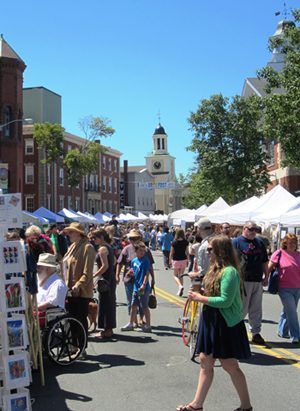
Location: Beverly Description: However you choose to get here - fly in, sail over, take the train - visiting downtown Beverly and the new Beverly Arts District (BAD) is worth the trip! With Montserrat College of Art in the heart of the district, BAD is home to hundreds of working artists and art students whose work can be seen and heard all over the district. Many graduates choose to stay in Beverly and open their creative businesses, form their bands and publish their books. They exhibit in a dozen galleries like Mingo, the 301 Gallery and The Window. They create in studio spaces at Zeitgeist Gallery and at Clay Dreaming and in the 40+ spaces at Porter Mill, an historic brick building that also houses the Wicked Art Bar and is host to Beverly ComicCon. Actors, musicians and comedians perform on stage at the historic Cabot Theatre which is being restored to its 1920s glory and at the dazzling Larcom Theatre. They play their horns at Chianti, one of Beat Magazine's top 150 places in the world to hear jazz! When you visit, make a day of it -- enjoy the beach that is 2 blocks away, visit galleries sprinkled throughout the district, play a little tune on our street piano, paint your own canvas and dine in one of our award-winning restaurants like Barrel House, named one of Zagat's '10 Hottest US Bourbon Bars. You can experience art in local businesses that transform their walls into galleries. Leave your mark on the world-famous Graffiti Wall that runs along the commuter rail tracks. Take a class at Philip Lowe's Furniture Institute of MA or listen to poetry in improbable places like poolside at the Y and at the bike shop. The District is also home to cool events like Arts Fest in June, summer block parties, the Gran Prix Bike Race in July and Beverly's New Year on December 31. |
|
| Boston Little Saigon | Greater Boston |
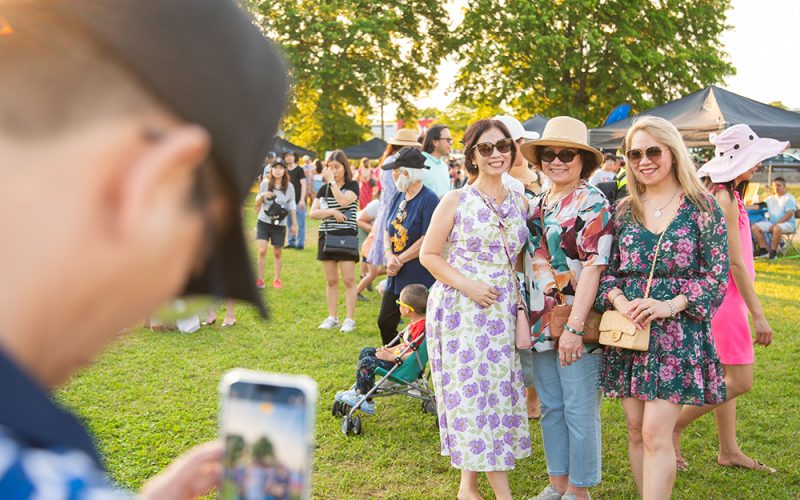
Location: Boston Description: Boston Little Saigon is a cultural district that strives to help local arts and humanities improve the quality and range of their public programs so that more local families can benefit from them. Our district aims to highlight, recognize, and preserve Vietnamese American culture already present in the area and the community's significant contributions to Dorchester's unique history of immigrant experiences. |
|
| Boston’s Latin Quarter | Greater Boston |

Location: Boston Description: In Boston's Latin Quarter, located in Jamaica Plain's Hyde/Jackson Square, you will find bright murals, sculptures, Latin American businesses, cuisine from various cultures, corner bodegas, crowded Dominican barbershops, and Latina beauty salons, all while cars cruise by blasting the latest bachata song. This is adynamic Cultural District where Latino immigrants, primarily from the Caribbean, have thrived for decades.Mozart Park is host to cultural events, including the Tito Puente Latin Music Series and Theatre in the Park. Boston's largest Latino festivals have their roots in the Latin Quarter, among them the Dominican Festival and El Convite Banilejo, an annual gathering of thousands of people from the Bani area of the Dominican Republic. A Three Kings Day parade, Latino Heritage Month events, and the ÂViva el Latin Quarter! Summer Series guarantee cultural vibrancy year round.The historic Blessed Sacrament Campus is at the heart of the cultural district where Hyde Square Task Force, a youth-development organization, owns two buildings. The Cheverus Building is a hub of youth development and Afro-Latin arts. The other is the former Blessed Sacrament Church, a 100-year-old architectural icon. The City of Boston's Connolly Branch Public Library is a Latin Quarter treasure. The staff embrace the neighborhood's Latino history and culture and the library is home to one of the largest collections of bilingual and Spanish-language books in the city. The people and cultures of Latin America create beautiful art, music, traditions, literature, language, theatre, and food. The Latin Quarter serves as a cultural home for Greater Boston's Latino community and the lives of residents and visitors alike are enhanced by preserving, showcasing, and celebrating all it has to offer -- come see for yourself! |
|
| Canalway Cultural District | Northeast |
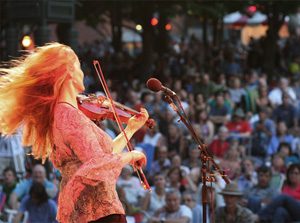
Location: Lowell Description: Lowell's Canalway Cultural District offers historical sights within a forward-thinking, innovative community. Lowell National Historical Park, Whistler House Museum of Art, Angkor Dance Troupe, and Merrimack Repertory Theatre are just a few examples of the city's flourishing creative network. With multiple large-scale annual festivals, a wide variety of performance spaces, concerts of all genres, and creative spaces for making and exhibiting artwork, Lowell is a hub of culture in the Merrimack Valley. |
|
| Central Square Cultural District | Greater Boston |
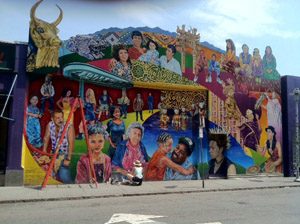
Location: Cambridge Description: Cambridge's Central Square Cultural District is home to a mix of small, funky, independently-owned shops and creative start-ups, with larger, well-established corporations, all supported by existing cultural resources such as public art, resident artists, dynamic cultural organizations, ethnic restaurants, and leading educational institutions like Cambridge College and MIT. Central Square is home to a number of large cultural events, including Cambridge Science Festival, Cambridge River Festival, Central Square World's Fair and the City Dance Party, together drawing an annual audience to the square in excess of 500,000. Property-owners in the Square are committed to the vision of the District and support attracting new businesses that will maintain a positive balance of size, diversity and industry. The Central Square Cultural District amplifies an authentic, urban neighborhood that is constantly evolving while maintaining its core identity as a unique and eclectic place to live, work and play. |
|
| Concord Center Cultural District | Metrowest |
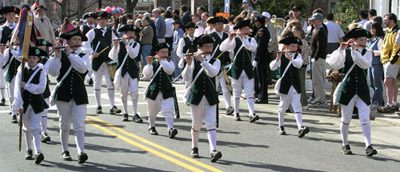
Location: Concord Description: The Concord Center Cultural District is a picturesque New England village. 18th, 19th and 20th century buildings in a National Historic District are backdrops for world-class dance, concerts and art exhibitions. Although you see a bit of history at every turn, you are invigorated by history being made today by goldsmiths handcrafting jewelry, artists creating and teaching their craft, and performers taking an evening dining experience to another level.The first battle of the American Revolution took place in Concord on April 19, 1775. Listen to fife and drum corps from all over the nation as they march down Main Street at the annual Patriot's Day Parade complete with marching Minutemen and historical re-enactors on horseback. The Concord Players traces its history back to 1856 and pays homage to its founder, Louisa May Alcott. Today, the Players perform at The Performing Arts Center at 51 Walden, which is also home to the Concord Band and the Concord Orchestra. And there are more than 50 resident artists at Emerson Umbrella Center for the Arts that open their studios twice a year. Concord's ArtWalk, Sizzlin' Summer Sidewalk Sales, and Holiday Shopping Night bring Concord's merchants, artists, and performers to the streets. Concord Center has been the hub of activity for centuries for Concord residents and visitors and remains so today. |
|
| Cottage Street Cultural District | Western |
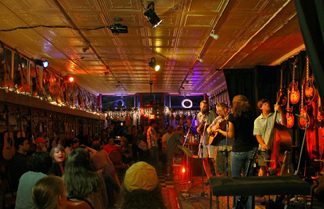
Location: Easthampton Description: Located at the base of Mount Tom, Easthampton's Cottage Street Cultural District, known for its down-to-earth funkiness, has an eclectic array of quaint shops, galleries, and bustling night-life all set in the back-drop of a diverse arts scene. Enjoy a Sunday brunch and a movie with views of the Nashawannuck pond at Popcorn Noir -- a cinema and restaurant that serves up movies, cocktails, theater, and live music. Next door is Platterpus, Too - known for being what a record store used to be. Bibliophiles and collectors head to White Square Books and Fine Art replete with carefully selected first editions and reasonably priced books. Luthier's Co-op serves-up live bluegrass, local beers, and a wide-array of guitar strings and vintage instruments. Experience the dynamic monthly Art Walk Easthampton, a vibrant array of exhibitions, performers, and musicians held every Second Saturday. Visit Open Studios twice a year hosted by over 60 working artists in the Cottage Street Studios. Events that happen throughout the year including Art Walk and the Nash Gallery's Plein Air Paint Out make Easthampton's Cottage Street Cultural District a premiere artistic destination. |
|
| Crossroads Cultural District | Western |
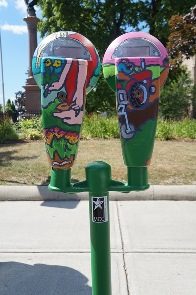
Location: Greenfield Description: Do you like journeying off the beaten path and discovering new delights in unexpected places? Visit the Crossroads Cultural District and find something cool and different in every corner; Greenfield proves the adage that great things come in small packages. Come enjoy the completeness of a quirky, small, old-fashioned, full-service New England town that's enjoying a blossoming of arts, music, history, and culture as more and more artists of all stripes discover this easily-accessible yet hidden Western Mass treasure.Located right off the junction of Route 2 and I91, with the Mohawk Trail (2A) and scenic Routes 5 & 10 running directly through it, the Crossroads Cultural District in Greenfield is aptly named. From a painted parking meter to mural that covers the side of a building, from a single busker to a week-long spoken word festival, there?s always something to find in the Crossroads Cultural District. |
|
| Cummington Cultural District | Western |
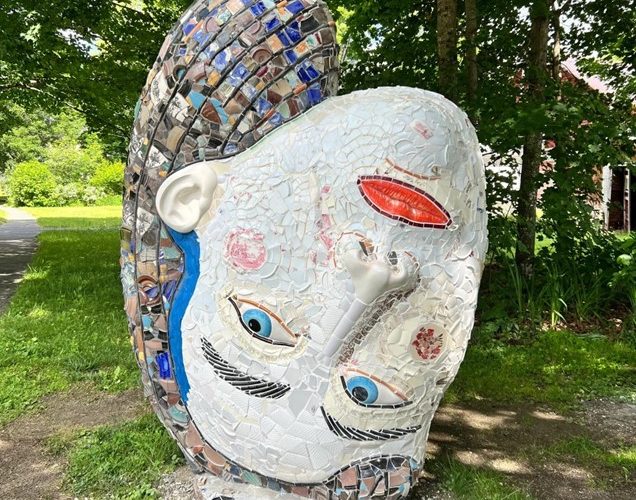
Location: Cummington Description: The Cummington Cultural District may be the first and only rural district in the Commonwealth. The town has a population of under 1,000, and its agrarian nature differentiate it from other districts in suburban or urban settings. Nestled in the middle of rural towns, Cummington has a lovely preserved Main Street, is the geographic center and hub of the major roads going through the Northern Hilltowns, and has a unique and especially notable connection to arts and culture since the 1800s. What other town has a poet on their town seal and is the home of two other Poet Laureates? (William Cullen Bryant, William Jay Smith and Richard Wilbur, respectively). Well-known artists such as Helen Frankenthaler, Willem de Kooning, Diane Arbus, Marianne Moore, and Archibald Macleish all attended the Cummington Arts School (1923-1993). Cummington has been a place where art and agriculture intersect, and where one can experience the natural beauty of the Berkshire foothills and visit the studios of so many writers, painters, poets, sculptors and potters during the Hilltown Studio Open Tour. |
|
| Downtown Lynn Cultural District | Northeast |

Location: Lynn Description: The core of this city may be one of Massachusetts' best-kept secrets -- a fusion of contemporary artists and multicultural cuisine and the authentic bricks and mortar of a city steeped in a history at the forefront of America's industrial history. Mingle with the artists and entrepreneurs who are drawn to the myriad of street activities, performances, and museums. Lynn's Central Exchange Cultural District includes historic museums, multiple performance spaces (like LynnArts' Neal Rantoul Black Box Theater), galleries like RAW showcasing young artists, numerous artist studios, WFNX Radio, ethnic restaurants and marketplaces reflecting the city's diverse population, and a resurgence of new restaurants like the Turbine Wine Bar. |
|
| Downtown Westfield Cultural District | Western |
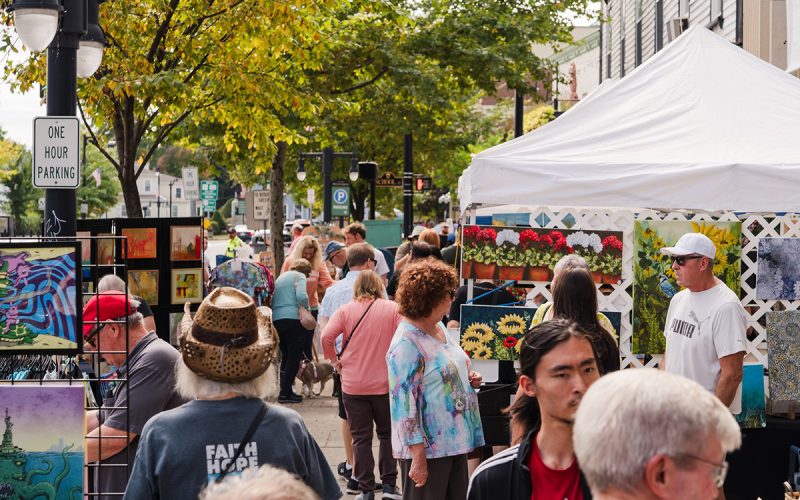
Location: Westfield Description: Where community and creativity are celebrated with more than 50 independent, diverse small businesses, a wealth of performance and gallery spaces, public parks and trails, and a commitment to inclusion and access, the Downtown Westfield Cultural District is the historic, civic, and economic hub of the City of Westfield. Through lectures and artistic displays at the Westfield Athenaeum, dramatic performances at the Westfield Women’s Club, and festivals and Art Walks supported by Westfield on Weekends! and ArtWorks of Westfield, opportunities to connect with your inner artist abound in the District. Every season, fresh programming is offered, including the famous PumpkinFest, Articulture in April, and the Friday night summer concert series serve to bring families and people of all ages to our Downtown community where they can find unique shopping experiences and a wide range of culinary delights, including Tex-Mex, traditional American, Vietnamese, Ukranian, Spanish, and Polish foods. |
|
| Essex River Cultural District | Northeast |
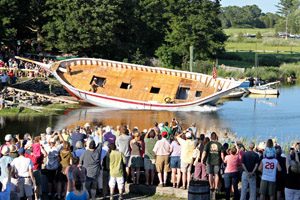
Location: Essex Description: The Essex River Cultural District is sensible and compact, both in terms of geography and concept: this is where "the town meets the river." The district meanders past ancient burial grounds, active shipyards and marinas, bustling restaurants, antique shops and galleries. The district offers vistas of Burnham's Shipyard, the Essex Historical Society and Shipbuilding Museum, which houses an important collection of marine related antiquities and much of Essex's rich history, and the stunning Essex River with its salt marsh borders looking out to Hog Island and Crane Beach. Pocket parks line the street with benches for relaxing and taking in the views. The district presents a dynamic and active relationship between history and the river, not one that is frozen in the past. Residents are encouraged to get out onto the river to experience it first-hand; the shipbuilding tradition is still alive and well and the town celebrates each new launch; and early antiques share shelf space with more recent memorabilia and contemporary crafts. |
|
| Fall River Waterfront Cultural District | Southeast |
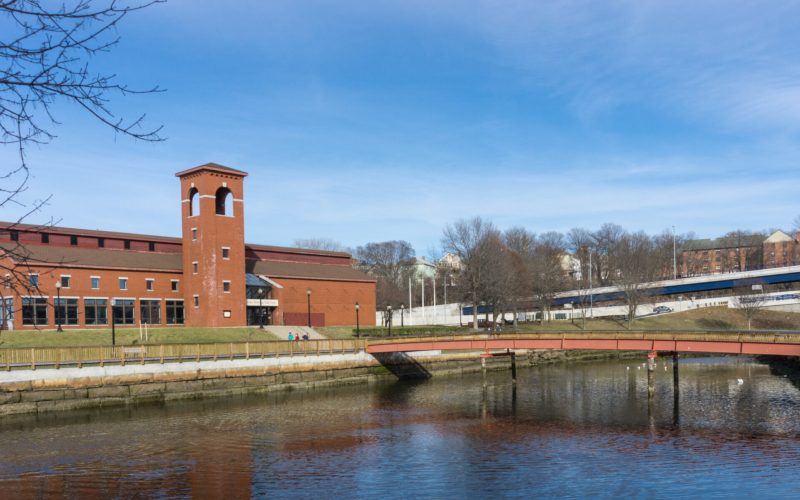
Location: Fall River Description: To the North sits one of Fall River's majestic granite mills which offers modern living spaces with sunset views of the Taunton River, and federally recognized through the National Park Service as a designated wild and scenic river. This mill is also home to a waterfront restaurant, art gallery other supportive amenities for the residents including an environmental branch of Bristol Community College. Adjacent is a public boat ramp offering boaters the opportunity to come and reflect at the many memorials at Bicentennial Park from a replica of Iowa Jima to the Gold Star Mothers and coming soon an 80% replica of the Vietnam Veteran's Wall. If you prefer to walk along the renovated board walk you pass waterfront dining, community boating, DCR/Heritage State Park which offers visitor services, gallery exhibits, auditorium, event venue and more. In addition to the Taunton River the district offers a variety of waterways (Taunton River, Quequechan River Falls runoff, and Crab Pond. You can't help but pass Battleship Cove, the largest display of war ships in the world (USS Massachusetts), as well as the Maritime Museum which tells the story of Fall River's maritime history including The Fall River Line and the RMS Titanic. The area is also punctuated by an historic carousel. Flanked by impressive granite and brick mills that house a variety of artisans, craftsmen, designer sewing shops, furniture manufacturers, recording studio and lost spaces for filming of many past documentaries. & cultural venues such as The Narrows Center for the Arts, restaurants, breweries, retail and manufacturing. You will also come across the state pier which is home to the Block Island Ferry during the summer seasons. In the past this district welcomed cruise ships from NYC including the, once, majestic Fall River Line ships. Just a short distance is a cultural replica of the Ponta Del Garda (Gates of the City) leading to Columbia Street where you will experience a taste of true Portugal culture. As you move west you will enjoy more restaurants and one of the larger marinas in the Commonwealth. This district is unique with a diverse variety of assets from old world to current day and how well they complement and work together. |
|
| Fenway Cultural District | Greater Boston |
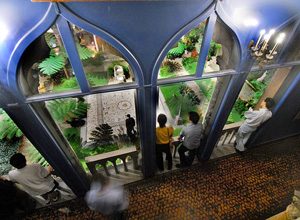
Location: Boston Description: A walk through the Fenway Cultural District in Boston puts you at the doorstep of the world's most acclaimed cultural destinations: the Museum of Fine Arts with its new Art of the Americas wing; the incomparable Isabella Stewart Gardner Museum and its new performance venue where every seat is in the front row; and Symphony Hall, home of America's favorite orchestra, the Boston Symphony. And you haven't even scratched the surface. Art and history lovers will feast on the best of American culture and still come back for more. Dine in a museum courtyard, or duck into an authentic ethnic restaurant. Other top destinations include Fenway Studios, the New England Conservatory, the Boston Conservatory, Berklee College of Music, Massachusetts College of Art, Simmons College, and the Massachusetts Historical Society. All are easily accessible by public transportation. |
|
| Framingham Centre Common Cultural District | Metrowest |
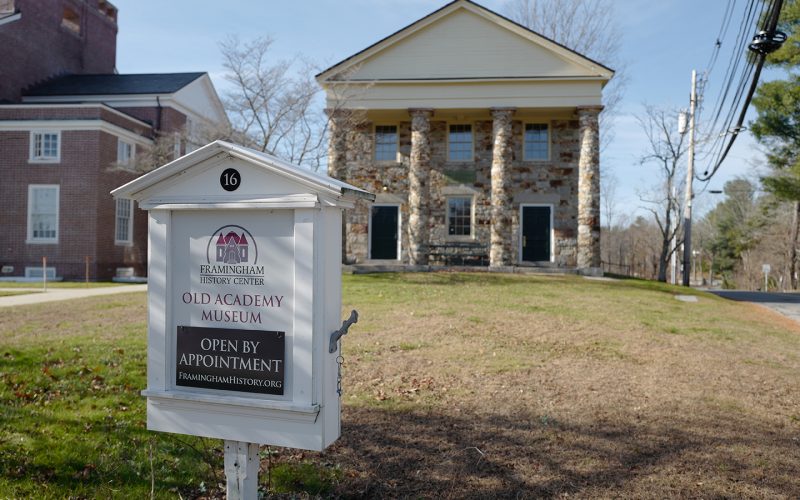
Location: Framingham Description: Framingham Centre Common has been a site of religious and civic institutions in Framingham since the early 18th century. The city's meetinghouse was located here in the 18th century, and the town hall in the 19th century. With the development of the Boston-Worcester Turnpike (Route 9) in the early 19th century, the area grew into a commercial node near the geographical center of the city as the halfway point between Boston and Worcester. The location of a State Normal School, now Framingham State University, on Bare Hill in 1853 also contributed to the growth of the area in the 19th century. Commercial and institutional interests are clustered at the Centre Common, a historic greenspace just north of Route 9, with residential neighborhoods surrounding this public core. Framingham State University balances the Centre Common area on the south side of Route 9. Due to the area's continued and varied settlement, the district includes buildings from the 18th through the 20th century. Local, state, and federal organizations have recognized the significance of the area. The district includes two local historic districts - the Centre Common Historic District (1978) and the Jonathan Maynard Historic District (1994) - and a National Register of Historic Places District - the Centre Common Historic District (1990). Today the area is a vibrant mix of residential development, commercial buildings such as restaurants and small businesses, and a significant number of religious and non-profit institutions. Major contributors to the area's cultural density include Framingham State University, the Danforth Museum, the Framingham History Center, and Access Framingham as well as First Parish Church, Plymouth Church, First Baptist Church, and St. Andrew's Church. |
|
| Franklin Cultural District | Metrowest |
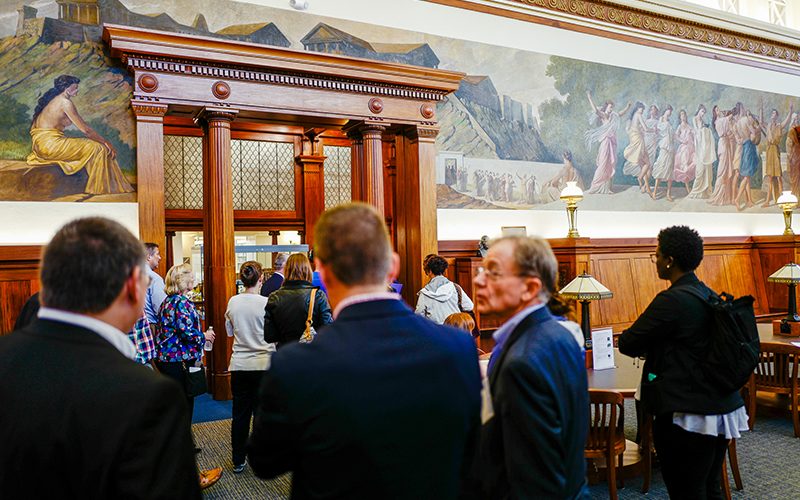
Location: Franklin Description: The Franklin Cultural District is alive with energetic events, family-friendly festivals, creative classes, concerts, culinary experiences, and much more! |
|
| Glass Town Cultural District | Southeast |
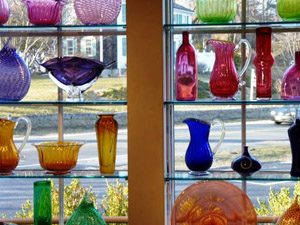
Location: Sandwich Description: Sandwich's Glass Town Cultural District focuses on the village center, with the Sandwich Glass Museum serving as the focal point -- a lens to tell the story of Glass Town. Whether photographing the picturesque Shawme Pond, watching live glass-blowing, or learning about our nation's colonial history, visitors may easily spend a week in Sandwich and still have sites to enjoy. Recent restoration work on the historic Town Hall has reopened the upstairs theater space. The Dexter Grist Mill & Hoxie House was recently restored to capture life in the 1600s. The Sandwich Public Library houses the town's historic archives and offers cultural programming for various age groups. Historic inns, private residences, four architecturally significant church buildings, restaurants and shops are located in the district. Outdoor juried artisan shows, an antique market, and an annual Street Fair with a Best Sandwich in Sandwich Competition take place yearly. There are two art galleries and a small community of working artists and a great response to the recent revival of community theater productions. The focus on "Glass Town" connects the town's history with its present, and weaves together both art and industry. This is not your "typical Cape town" -- there is something different here, rooted in history but continuing in the present day; a heritage connecting artisanship and innovation; a sense of place that celebrates the beauty of a natural setting while calling attention to the ways it has been shaped by the hands of people. |
|
| Great Barrington Cultural District | Western |
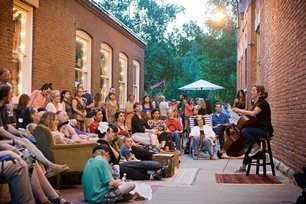
Location: Great Barrington Description: Great Barrington is home to a diverse combination of social, architectural, and cultural resources that reflect the history of the southern Berkshires ranging from popular acts at the Mahaiwe Performing Arts Center, a regional performing arts powerhouse drawing more than 40,000 a year, the annual Berkshire International Film Festival, now in its 12th year, cheese, wine, and charcuterie pairings at Rubiner's, one-of-a-kind concerts and exhibitions at Saint James Place, children's educational programs at Mason Library, and story slams at locally owned coffee house, Fuel. Performing arts organizations working within the district include Berkshire Playwrights Lab (BPL), Berkshire Opera Festival, Berkshire Bach Society, and Aston Magna. Community Access to the Arts (CATA) nurtures and celebrates the creativity of people with disabilities through shared experiences in the visual and performing arts.Cultural and historic preservation play an important role in the success of Great Barrington’s economy, including recognition of the W.E.B. Du Bois home site and birthplace, establishment of the Housatonic River Walk, and the renovation of Saint James Place, now a cultural center for performing arts groups of all sizes. The district contains multiple buildings on the National Register of Historic Places: among them Mason Library, Town Hall, and the Mahaiwe Theater. Outdoor recreation is available within the district on the Housatonic River Walk. As the first officially designated Appalachian Trail Community in Massachusetts, Great Barrington values connections to the surrounding landscape. The Downtown Great Barrington Cultural District is the bullseye of a much larger cultural target, positioned within a broad array of farm-to-table opportunities, skiing facilities, lodging properties, waterways, antique shops and spas. Venues close to the Downtown Great Barrington Cultural District include Bard College at Simon’s Rock, Berkshire Pulse dance studios, Berkcirque, art galleries in Housatonic and surrounding towns, the Guthrie Center, and historic homes and landscapes like the Bidwell House Museum and Monument Mountain Reservation. |
|
| Harbortown Cultural District | Northeast |
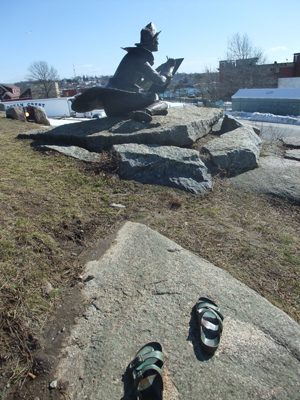
Location: Gloucester Description: The Harbortown Cultural District is the hub of Gloucester's downtown and the center of the oldest seaport in New England. The harbor and its work have inspired all manner of creative artists, iconoclasts and activists for centuries and continue to draw locals and visitors. Harbortown boasts a staggering array of cultural assets, businesses, and year-round creative arts and entertainment activities. Dozens of festivals celebrate the city's diverse ethnic heritage, fishing traditions, literary giants, and contemporary arts and culture. Harbortown counts more than 35 restaurants, many of which host live music at night and feature changing art exhibits. The Cape Ann Museum is lauded as one of the finest small museums in the country. Harbortown also features the HarborWalk -- an interactive public path featuring stories and images of the district?s annual St. Peter's Fiesta, heroic fisherman Howard Blackburn, artists such as Winslow Homer and Edward Hopper, poets Charles Olson and T.S. Eliot, writers Sebastian Junger and Virginia Lee Burton, along with inventors and waterfront workers. The Walk loops by a working waterfront, past sea captain mansions, pocket parks, the seven gabled Fitz Henry Lane house, and the museums. |
|
| Harwich Center Cultural District | Southeast |
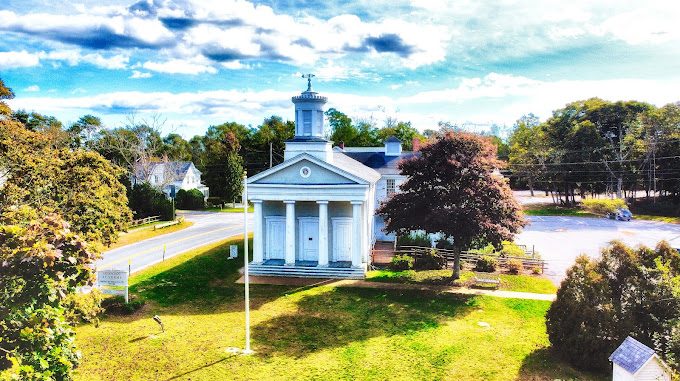
Location: Harwich Description: The Harwich Center Cultural District is in the heart of the historical hub of the Town of Harwich. The Center is home to many events, historical sites and landmarks. The Cape Cod Rail Trail runs parallel to historic Main Street connecting the district's valuable assets. Harwich Center Cultural District is anchored by ‘The 204’ which is home to the creative community; a repurposed middle school turned into Studio Launch Space as well as the epi-center for all cultural programs and events. Our Harwich Center Cultural District is home to not only our historical sites and rich history but the Harwich Mariners Baseball Team who plays within the Cape Cod Baseball league, one of the nation’s premier collegiate summer leagues. From a deep dive into history at the Brooks Academy to learn about the first private academy in Harwich, or a walk over to the Brooks Library to learn about the Cranberry Growing History and the Cape Verdean Culture, Harwich Center Cultural District is the place where art and culture meet history. |
|
| Harwich Port Cultural District | Southeast |
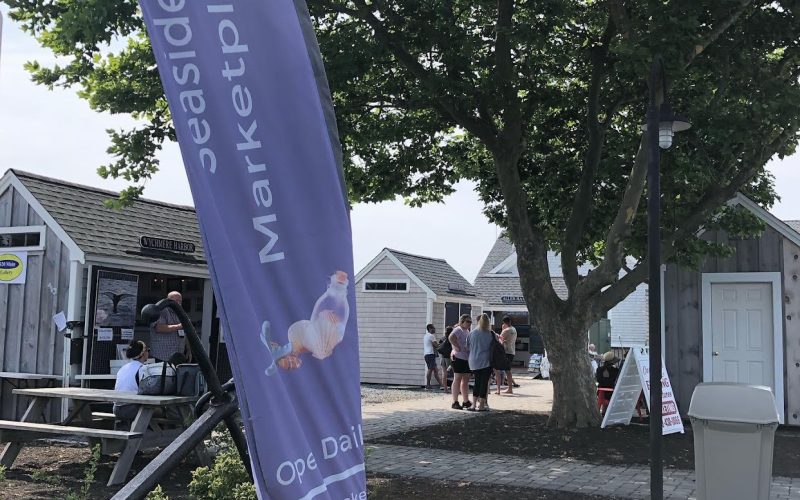
Location: Harwich Description: The Harwich Port Cultural District is the place for all things land and sea! On the sunniest side of Cape Cod, Harwich Port was settled by the seaman and fisherman, many of whom specialized in boat-making, sail-making and carpentry. Harwich Port has quickly over the years become a visitor’s haven with a rich arts and culture scene. From Live music in the Port throughout the summer, to Art in the Park, Artists Shacks at our Seaside Marketplace and more the Port has all you need. With a variety of tasty menus, quaint shops, galleries, and more, Harwich Port Cultural District is the hub for Live Music, Gallery Strolls, and immersing yourself in Art. Scenic overlooks and quick access to numerous beaches allows all visitors a chance to engage with the Marine Science Life and learn about the significance it has for our cultural community. The Harwich Port Cultural District is a vibrant and robust area that has something for everyone. |
|
| Holyoke Puerto Rican Cultural District | Western |
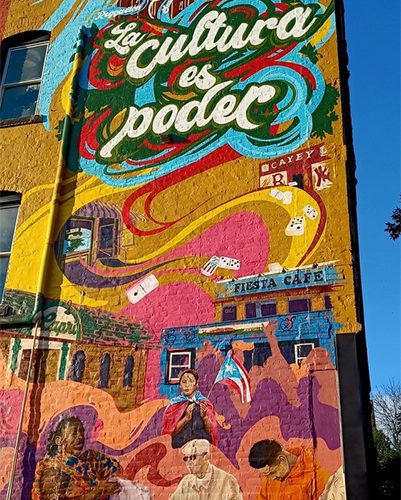
Location: Holyoke Description: The Holyoke Puerto Rican Cultural District is an emerging, vibrant part of the city, adorned with striking murals that celebrate Puerto Rican heritage and community pride. The district is alive with bustling restaurants, where locals and visitors alike can enjoy authentic Puerto Rican cuisine, and public spaces where people gather, celebrate, and connect. Beyond food and art, the district is a hub for a variety of local businesses, faith-based organizations, and nonprofits all dedicated to uplifting the people of Holyoke. At its heart stands Nueva Esperanza, an arts and cultural center that embodies the spirit of the district, fostering creativity, community, and cultural preservation. |
|
| Hyannis HyArts Cultural District | Southeast |
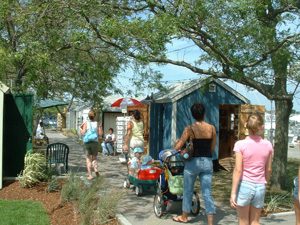
Location: Barnstable Description: Located in the thriving Cape Cod seaside village of Hyannis, the HyArts Cultural District provides a wide array of arts and cultural experiences, outdoor activities, shopping, and dining. Visitors can explore President John F. Kennedy's Cape Cod roots at the JFK Hyannis Museum and the new Kennedy Legacy Trail. Learn about the Cape's rich maritime traditions at the Cape Cod Maritime Museum and set sail on the catboat Sarah. See exhibitions of talented local artists at the Hyannis Harbor Arts Center at the Guyer Barn. Attend free concerts right on the harbor through the Citizens Bank Tuesday Night Concert series and Sunset Celebrations. Visit the Harbor Shanties to buy work from local artisans or check out any of the dozens of unique shops within the District. |
|
| Lenox Cultural District | Western |
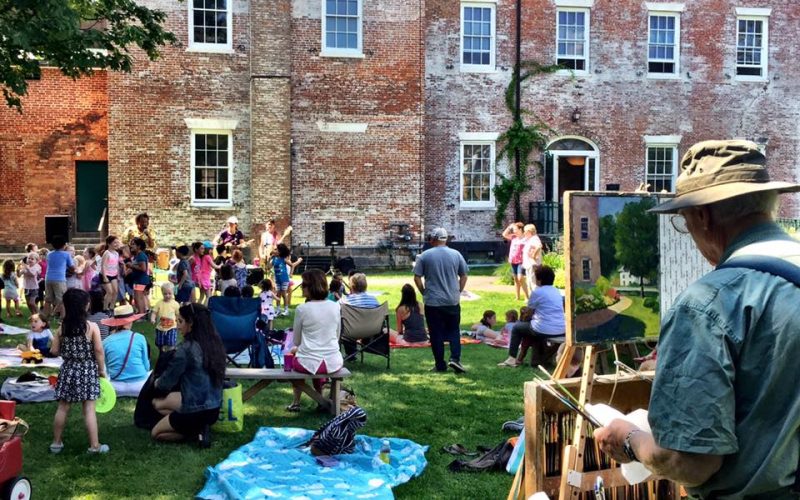
Location: Lenox Description: Lenox combines New England small town charm with world class culture and arts. It is the home of renowned performing arts venues and historic sites, along with destination wellness and lodging facilities. These amenities keep visitors coming back, provide a rare quality of life for residents, and contribute tremendously to the reputation of the Berkshires. Lenox does not simply entertain, it also educates. Programming abounds for all ages and interests, offered by local schools and churches, long-running summer camp programs, outreach programs of theaters and museums, library and community center activities and life-long learning courses connecting adults with new and inspiring experiences. A full cultural experience in Lenox includes sampling an array of restaurants, shops, and galleries. Many of these are independently owned and their offerings are truly unique and often locally-sourced. Downtown Lenox is compact and walkable, offering a high concentration of cultural assets. However, the cultural richness of Lenox also emanates into neighborhoods and rural expanses surrounding town. Assets in and around the Lenox Cultural District form a well-deserved reputation for world-class cultural experiences and one-of-a-kind treasures. |
|
| Lexington Cultural District | Metrowest |
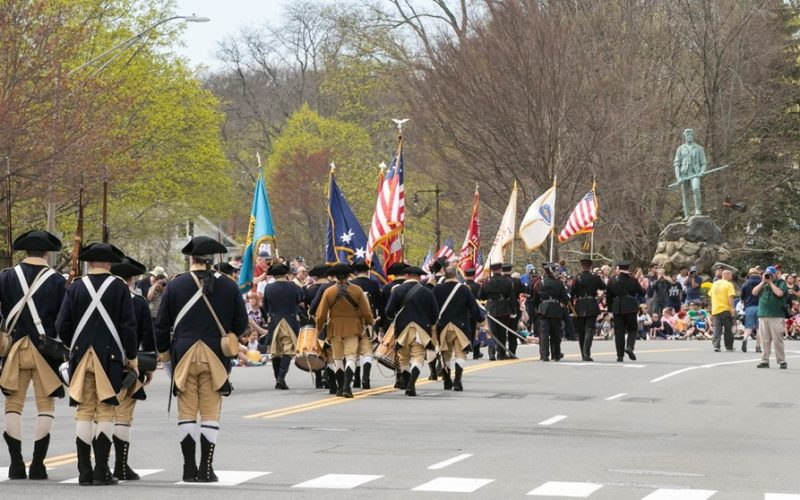
Location: Lexington Description: In Lexington, as in Arlington, Bedford, and Concord, history and the present are intertwined. Like Arlington and Bedford as well, Lexington was originally a long, strung-out settlement centered first on Mass Ave and then, in 1846, along the Boston and Lynn railroad. The railroad was abandoned from 1977 to 1993 when it was reborn as the 10.1-mile-long Minuteman Bikeway. The Bikeway links our towns as the railroad had done, beginning at Alewife Station in Cambridge, passing through Arlington, and ending a mile into Bedford. Most of the cultural institutions of Lexington can be found between Mass Ave and the Bikeway. As the Birthplace of American Liberty, the Town of Lexington, Massachusetts, has many events and assets through which one can experience Lexington’s rich history and relive the events of April 19th, 1775. Lexington has a charming, quintessential Downtown. Colonial Lexington is centered around its Battle Green, where the first skirmish of the Revolutionary War, re-enacted annually, took place on April 18, 1775. The Green is surrounded by houses, some original to the time, including the Buckman Tavern (1710), where John Hancock and Sam Adams were gathered until Paul Revere arrived in time for their retreat to the Hancock-Clarke House (1737), a few blocks away on Hancock Street. The Lexington Cultural District enhances these assets and highlights Lexington’s arts and cultural community. |
|
| Marlborough Downtown Village Cultural District | Central |
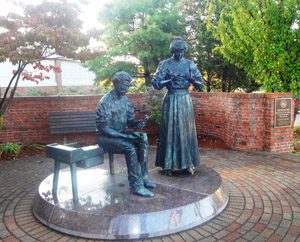
Location: Marlborough Description: The Marlborough Downtown Village Cultural District -- referred to as the "cultural heart" of the city -- is an architecturally attractive, ethnically diverse, and inviting area that is easily accessible by bus, car, bike, and foot. The downtown's cultural assets are enjoyed by residents from all parts of the city, and cultural stakeholders have endeavored to increase Downtown Marlborough's profile across the region and further expand upon its natural assets. Most notable to the cityscape are the many steeples and spires of City Hall and area churches that characterize a skyline which has remained visually unaltered since their construction. Marlborough Downtown Village, Olde Marlborough and Marlborough Regional Chamber of Commerce are three groups that promote the arts, history, and creative economy within the City and the region. It is comprised predominantly of service-related businesses, including a robust selection of restaurants representing a variety of cuisines, barber shops, CPAs, law offices, and printing companies. Marlborough's Cultural District encompasses the building blocks to a blossoming cultural district in ways that are authentic to the city. |
|
| Maynard Cultural District | Metrowest |
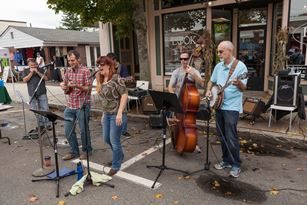
Location: Maynard Description: In a region steeped in Colonial history, Maynard offers a unique experience for residents and visitors alike based on its history and creative culture. A walk through downtown Maynard along the Assabet River features art galleries and pottery studios, offering unique works by renowned local artists. ArtSpace Maynard, a repurposed schoolhouse with 80 artists in 43 studios that, is one of the cornerstones of Maynard's artistic spirit. Young families and the intellectually curious will find diverse programming and resources at the Maynard Public Library, which has recently undergone a $5 million dollar restoration. Performing arts fans can enjoy a blockbuster or independent film at Fine Arts Theatre Place, a fully restored 1950s era movie theatre, or view live theatre at ACME Theater which produces original works by local playwrights.Maynard loves to celebrate its culture, and festivals fill the calendar, including the Spring Artwalk, Fourth of July, Oktoberfest, Holiday Sip 'n Stroll, OARS Film Festival, and Maynard Fest. Called the 'Harvard Square of MetroWest' by Boston Magazine, Maynard is a unique community with a something for everyone. |
|
| Nantucket Cultural District | Southeast |
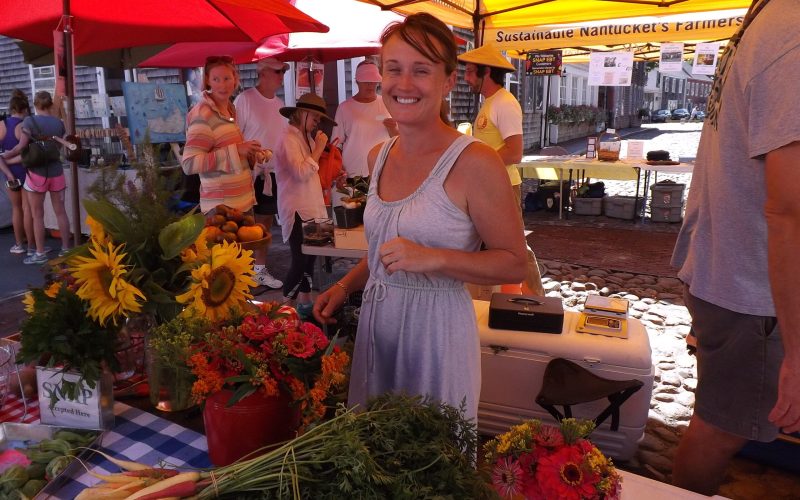
Location: Nantucket Description: Whether you love nature, history, or the arts, Nantucket offers each in abundance. Encompassing the island's downtown core, the Nantucket Cultural District embraces the heart of the island's wealth of arts and culture. Visitors especially like going back in time on Nantucket, with its cobblestone streets, historic public buildings, well-preserved homes, and hidden pathways. Strolling around the 28 blocks of Nantucket Cultural District, visitors encounter hundreds of houses and landmarks on the National Register of Historic Places, sites that chronicle our nation's past in this present day setting. A busy waterfront, which abuts the district, welcomes visitors daily via public boat transportation and is home to a world-class marina and scenic harbor, where international sailing and power vessels lay anchor alongside sport fishing boats and traditional scallopers. A short walk away takes strollers to stunning public beaches. Little wonder that many movies and books have made the island central to their stories. |
|
| Natick Center Cultural District | Metrowest |
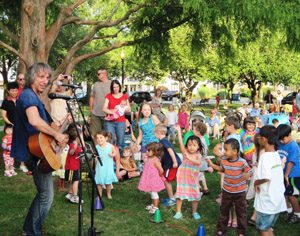
Location: Natick Description: The Natick Center Cultural District's majestic, late 19th-century, "neo-gothic" architecture serves as a visually impressive historic platform for the district's numerous cultural offerings and its cultural anchors ? The Center for Arts in Natick (TCAN) and the municipally-owned Morse Institute Library. Another key destination within the cultural district is the town common. Quintessentially New England, with its ample green space and wooden gazebo, the common provides an ideal stage for a busy calendar of free public concerts and festivals. The district is a culmination of over a decade of historic preservation and public and private investment in the town center's streetscape and facade improvements, and cultural facilities. In 2003, TCAN opened its doors, following an impassioned rescue mission by a group of local citizens and the thoughtful restoration of Natick's historic (c. 1875) Central Fire Station on Summer Street into the premier performing arts center in the Metrowest area. TCAN has drawn nearly 20,000 attendees to its 300 performances, classes, lectures, film programs, and art exhibitions during the past year. The district is home to over 100 working artists and dozens of independently owned businesses, and events such as the yearly Natick Open Studios, the Art Walk, and historic walking tours knit together its many activities. And, just steps away from the Common, the world-renowned Walnut Hill School for the Arts brings artists from all over the world to Natick, and down to Main Street to perform in the heart of this wonderful little town. |
|
| Newburyport Cultural District | Northeast |
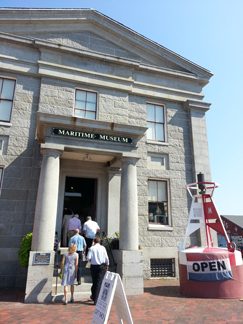
Location: Newburyport Description: Located on the Merrimack River, the Downtown Newburyport Cultural District is a charming, old-fashioned historical area offering an eclectic blend of arts, entertainment, dining, shopping, and cultural experiences. Newburyport affords residents and visitors alike a taste of history with its Colonial-era architecture, as well as its contemporary art, along the boardwalk. Widely known as the birthplace of the U.S. Coast Guard, Newburyport is rich in maritime history, as anyone who has taken a walking tour along the Clipper Heritage Trail will tell you. Craving more historical fare? Stop by the Custom House Maritime Museum to learn about Newburyport's ship-building past. Want to satisfy your thirst for local art? Mosey on down the street to the Newburyport Art Association where there are more than a few artists offering and showcasing their finest work. Want something totally different altogether? The Tannery Marketplace is the perfect locale for many unique and independently-owned gift stores, bakeries, bookstores, and The Actors Studio, a small, cozy theater. A testament to the well-planned urban landscape in Newburyport, visitors can easily follow the district along Liberty Street with its many shops to State Street, the heart of the district. There awaits the fine dining, art galleries, and shopping that individuals from all over New England have come to know and love. |
|
| North Adams Cultural District | Western |
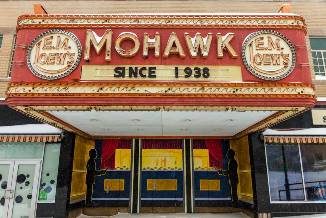
Location: North Adams Description: North Adams is a community defined by reinvention and reemergence, with the nexus of this activity located in the North Adams Cultural District. Murals by local and international artists dapple downtown, and restaurants and retail -- from locally owned coffee shops and music stores to dog grooming and other services -- can be found on every downtown street, giving this post-industrial city a unique feel for visitors and residents alike. With its striking mill buildings, the smallest city in Massachusetts is home to the largest contemporary art museum in the country. The Massachusetts Museum of Contemporary Art (MASS MoCA) offers a unique combination of temporary exhibitions, long-term installations, and curated performances. Its 13 acre campus is also home to private galleries such as Ferrin Contemporary and CYNTHIA-REEVES, along with creative economy businesses and Bright Ideas Brewing Company. The Massachusetts College of Liberal Arts adds to downtown activity with its gallery space Gallery 51, exhibiting work from emerging and mid-career contemporary artists. MCLA's Design Lab offers multi-use educational, exhibition, and performance space, and the Downstreet Art Initiative brings public art, performances, events, pop-ups and family friendly activities to the district all summer long.Other cultural institutions such as The Berkshire Art Museum, North Adams Museum of History & Science, and the North Adams Public Library populate downtown. Colegrove Park features outdoor movie screenings, concerts, yoga and other community events, while the district plays host to popular annual events including WinterFest, Downtown Celebration, Solid Sound Music Festival, Motorama, Eagle Street Beach Party, Bang on a Can and FressGrass music festivals, and the Fall Foliage Festival & Parade. Reinvent and refresh your creative side in this cultural district! |
|
| Orleans Cultural District | Southeast |
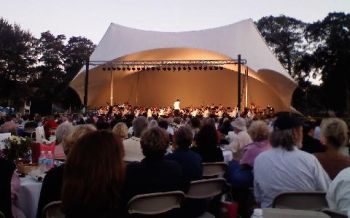
Location: Orleans Description: Anchored by the Old Firehouse and Parish Park, the Orleans Village Center Cultural District is a walkable network of attractions starting with Theresa's Way and extending through a necklace of pocket parks, public spaces, greenbelts, and vistas. Maritime heritage meets modern hospitality, art galleries and boutiques line the pathways, and iconic shops are around every corner. History lives on in Orleans -- in the Federated church dating to 1639, militia encampments celebrating the Battle of Rock Harbor from the War of 1812, and in 'pulling boats' re-enacting the Cape's first canal through Jeremiah's Gutter. Catboats flourish on Town Cove and Pleasant Bay, sailing out of Orleans Yacht Club, Namequoit Sailing Association, and Nauset Marine, supported by wooden boat-builders such as Arey's Pond Boat Yard and Pleasant Bay Boat and Spar. Performing arts, entertainment, lifetime learning, and countless recreational opportunities beckon year-round at the Academy Playhouse and School. And community celebrations abound, including Spring into Summer in May, Orleans Heritage Month in August -- which culminates with a performance by the Orleans Pops featuring the Cape Cod Symphony Orchestra, Celebrate Our Waters in September, Ukulele Cabaret and Plein Air painters during Capture the Cape, in October, and much more. |
|
| Paradise City Cultural District | Western |

Location: Northampton Description: Northampton is a great town for walking. Strolling along Elm Street, shaded by burgeoning elms and maples past classic New England architecture, your steps lead you to the world class collection at the Smith Museum of Art. Further on, you find the historic Academy of Music, where Bogie holds court in the lobby and the latest in film, dance, theater and more are presented onstage. Now you're at the upper end of Main Street, a wide boulevard offering a gauntlet of beguilement. Maybe it's an Arts Night Out, or maybe there's a show at the Horse or the Calvin. You keep walking, heading down Main, and craft shop demands a bit of window shopping, and that gallery demands a thoughtful pause, and the aroma drifting out of that restaurant stops you in your tracks. You finally pass under the railroad bridge and bikeway, perhaps pay a visit to Historic Northampton, but you're out of the clutches of Main Street, headed toward the Three County Fairgrounds. Maybe it's fair time, and you're wondering about a go on the Scrambler, or maybe it's time for the Paradise City Arts Festival and you're wandering through a maze of some of the finest crafts in America. Either way, take a look around and you see a highway in the distance, cars roaring along, and you think to yourself, "Those guys missed this exit." |
|
| Plymouth Bay Cultural District | Southeast |
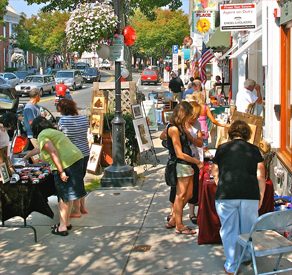
Location: Plymouth Description: The Plymouth Bay Cultural District is the Town's epicenter of art, music, food, shopping, and history, and its 100+ cultural assets enlighten and entertain visitors and locals year-round. As Plymouth approaches its 400th anniversary in 2020, this district is preparing a diverse slate of events and programs for domestic and international visitors as this historic commemoration unfolds. History buffs will love Plymouth Bay Cultural District, which contains almost three dozen historical sites and attractions, such as Mayflower II, the full-scale reproduction of the ship that arrived with the Pilgrims in 1620; Pilgrim Hall Museum, the longest continuously operating public museum in the country; and the Plymouth Rock along Plymouth Harbor. Enjoy live music? Catch a show at the Spire Center for Performing Arts or the Harbor Light Pavilion (you'll need a lawn chair for this outdoor venue!). You'll also find local live music any night of the week at one of the District's many eateries, from cozy pubs like the British Beer Company and New World Tavern to tropical Waterfront Bar and Grille and Cabby Shack to trendy Kiskadee Coffee Company. Looking for art? Check out Plymouth Center for the Arts, which hosts dozens of art classes and exhibitions year-round, or Golden Gull Studios. The Plymouth Bay Cultural District's shopping experience is diverse and extensive; sophisticated home goods, jewelry, and accessories at Setting the Space, refurbished antiques at Something For Your Dust, and locally-made cranberry wines at Plymouth Bay Winery. The Plymouth Bay Cultural District has several public parks and recreational areas, like Brewster Gardens and Pilgrim Memorial State Park, and the National Monument to the Forefathers park, all of which host various festivals and events throughout the year and are home to some of Plymouth's most visited statues and monuments, both old and new. There are plenty of places to stay in the district, so plan a weekend visit and experience all that the Plymouth Bay Cultural District has to offer. |
|
| Provincetown Cultural District | Southeast |
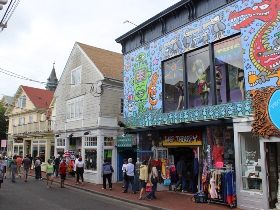
Location: Provincetown Description: Provincetown is unique in that the Heritage, History, Art, Theater, Literary, Film, Marine, LGBTQA communities all thrive and work together as one. The cultural district tells how the cultural story of Provincetown began in 1620, almost 400 years ago, when the Mayflower Pilgrims first landed in the harbor, dropped anchor and signed the Mayflower Compact, the first democratic document of the new world, the impetus of the United States Constitution. The Cultural District boasts over 60 art galleries throughout the Town. Not only do the arts thrive, the town is often defined by art, performance and creativity. Surrounded by water, artists of every stripe are drawn to the mile creative zone by the special light and aura of free expression. America's Oldest Continuous Art Colony was founded in 1899, when, at all of 28 years old and fresh from schooling and roaming Europe, Charles Hawthorne opened the Cape Cod School of Art in Provincetown with an emphasis on open-air painting.The exceptional expressive possibilities of the town were not lost on student artists, and the school soon began to produce graduates who went on to extraordinary careers. Provincetown Art Association and Museum (PAAM) held its first exhibition in 1915, a year after being established. The birth of Modern American Theater happened when Eugene O'Neill produced his first play, "Bound East for Cardiff;' in Provincetown in 1916. Tennessee Williams arrived to write and stage plays. Norman Mailer made his home in Provincetown. Artistic excellence is the hallmark of the Fine Arts Work Center, which awards fellowships to talented young artists and writers. Past Fellows have won nearly every major national award, including the Pulitzer, MacArthur, Whiting, Pollock-Krasner, Tiffany, Prix de Rome, Guggenheim, NEA, and the National Book Award. The FAWC Fellows spread throughout the district for inspiration and can be seen any day practicing and executing their crafts. Provincetown Cultural District is a place where art and culture is a defining feature of the community's DNA. |
|
| Riverfront Cultural District | Northeast |
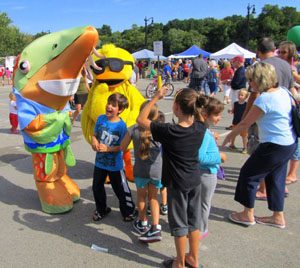
Location: Haverhill Description: Creative minds from the past and present collide in Haverhill's Riverfront Cultural District. Murals painted by local artists adorn the sides of historic brick buildings famous for their elaborate Queen Anne style brickwork. Giant reproductions of 19th century shoes and a shoe-worker's memorial give a nod to Haverhill's shoe-making past, while showcasing the unique designs of local working artists and students. Easily accessible by train, bus, car, or boat, the Riverfront Cultural District has something for everyone to enjoy. With such a large concentration of creative minds living and working in the district, you're sure to stumble upon a painting or music lesson, or even an impromptu theater performance in this welcoming art community. The Riverfront Cultural District is home to both large and small annual events including the River Ruckus Festival, the Christmas Stroll, National Holiday Concerts, the Haverhill Experimental Film Festival, and the Haverhill Chamber's Buy Local initiative, which encourages the support of local small businesses. Haverhill's Riverfront Cultural District is alive and growing, with new shops and businesses cropping up at every turn and more and more visitors discovering all that Haverhill has to offer. |
|
| Rockport Cultural District | Northeast |
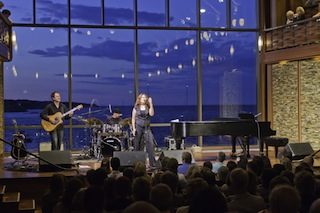
Location: Rockport Description: From the tip of Bearskin Neck and the iconic Motif #1, to Rockport Music's world-class Shalin Liu Performance Center with its stage overlooking the Atlantic, you'll have a once in a lifetime experience in Rockport. Shop in more than 40 art galleries. Grab a cup of coffee while watching the waves. Find out why international visitors make this a regular destination. Rockport's district boasts over 40 individual artist galleries and studios, as well as cultural institutions like the Rockport Art Association, one of the oldest active art associations in the nation. |
|
| Rocky Neck Cultural District | Northeast |
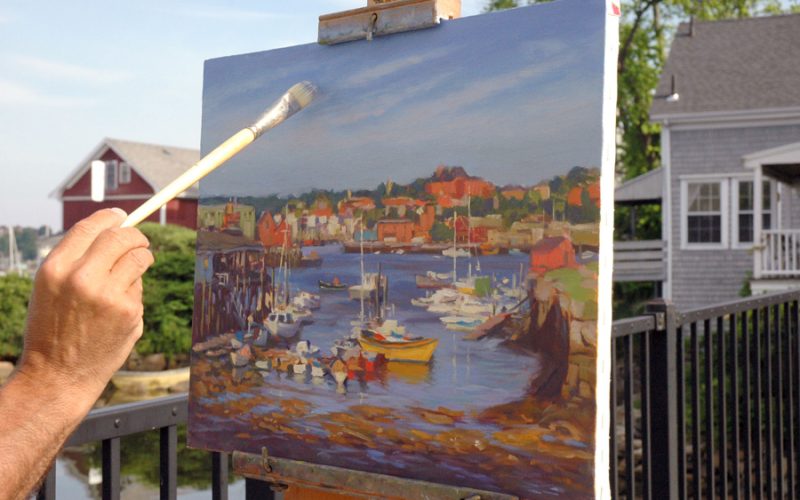
Location: Gloucester Description: There's something special about the light here. Find out why artists from around the world are drawn to one of America's first artist colonies: Gloucester's Rocky Neck. Stroll through artist galleries and studios nestled on this Cape Ann peninsula. Talk to the artists and watch them work. Grab lunch on the water overlooking a working fishing harbor. Rocky Neck is one of America's oldest art colonies, supporting an impressive number of year-round working artists. The district is home to numerous galleries and restaurants as well as the critically acclaimed Gloucester Theatre Company. Venues offer a calendar of special events like Nights on the Neck and the Rocky Neck Artist Ball. A dynamic new cultural and visitor center is also in the works. |
|
| Roxbury Cultural District | Greater Boston |
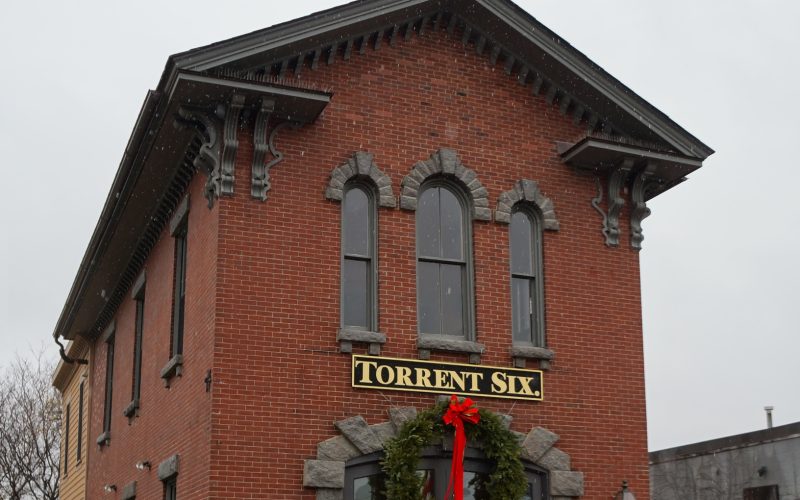
Location: Boston Description: Roxbury is the geographic center and the heart of Boston; the district -- its people, architecture, businesses, and cultural programming -- reflect Roxbury's unique multifaceted cultural heritage and Roxbury's importance in the past, present, and future of Boston. Roxbury holds fertile history that includes the First People, early English settlers, and the American Revolution. Once a neighborhood with a large Irish and growing Jewish population in the mid-19th century, Roxbury is now known as the center of African American culture in Boston and New England. The Roxbury Cultural District has strong ties to jazz, as well as early leaders of the civil rights movement. Roxbury's rich cultural fabric has developed over time and the neighborhood reflects the diverse ways in which generations of residents have lived, worked, played, worshipped, and learned within the district. Explore the district by seeing a performance at Hibernian Hall, dining and hearing live music at Suya Joint All African Cuisine or Dudley Cafe. Visit The First Church of Roxbury, a space in continuous use since English settlers built the first meetinghouse on the site in 1632, and walk next door to the Roxbury Heritage State Park with a panoramic view of downtown Boston. Explore the 1630 Eliot Burying Ground, Roxbury's oldest remaining landscape and an extraordinary outdoor museum on the site of the Boston Neck or Roxbury Neck, and then walk across the street for some food, drink, or spoken word at Haley House Bakery Cafe. An enlightening experience awaits those who connect with this historically significant and culturally rich area. |
|
| Salisbury Cultural District | Central |
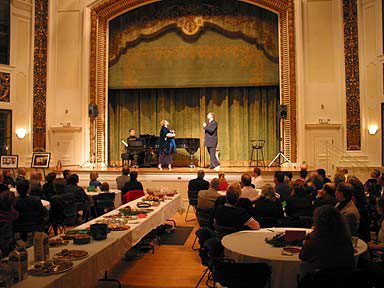
Location: Worcester Description: Worcester's Salisbury Cultural District is conveniently located near Interstates I-190 and I-290 adjacent to the city's historic Lincoln Square. Within a two block radius of this Lincoln Square keystone a dozen historically significant cultural and civic buildings stand. The district includes cultural institutions such as: the Worcester Art Museum; the American Antiquarian Society; Tuckerman Hall (home to the Massachusetts Symphony Orchestra); the historic Salisbury Mansion; and the main campus of Worcester Polytechnic Institute (WPI). It includes Institute Park (with its Levenson Concert Stage and Gazebo) and Salisbury Pond (a historic mill pond fed by Mill Brook, one of the water sources for the Blackstone Canal which once connected Worcester to Providence, RI). The district is home to six Houses of Worship (including the Armenian Church of our Saviour, the oldest Armenian congregation in America); 17 restaurants; 6 specialty galleries/gift shops; over 50 adaptively re-used properties; and 10 National Historic Register buildings. These entities collectively host over 1000 community events annually.Nearby attractions include the Worcester Center for Crafts, Bancroft Tower, the Sprinkler Factory, Worcester's historic Northworks mill and Rural Cemetery, as well as Worcester State University's Sagamore Road Studios and WPI's Life Science incubator labs at Gateway Park.The District takes its name from the Salisbury family, whose history as merchants, entrepreneurs, gentlemen-farmers, founders and benefactors of arts, cultural and civic institutions in Worcester is unparalleled and dates back to 1767. The district includes both the relocated historic Salisbury Mansion and Salisbury House, as well as several of the institutions the Salisbury family played a significant role in nurturing - the Worcester Art Museum (WAM), Worcester Polytechnic Institute (WPI), and the American Antiquarian Society (AAS). With sidewalks, crosswalks, bicycle paths, lighting, ample shade trees, historic buildings and an attractive natural and built environment, the district is safely and pleasantly walkable. Around every corner Worcester's vibrant past and visions for its creative future are revealed. |
|
| Scituate Harbor Cultural District | Southeast |
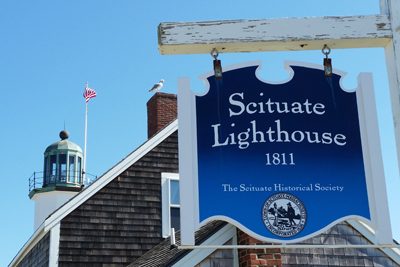
Location: Scituate Description: 30 miles south of Boston, the historic town of Scituate is a picturesque seaside community with its heart located in Scituate Harbor. The Scituate Harbor Cultural District, featuring a lively waterfront thoroughfare peppered with art galleries, storefronts, public performance space, and award-winning restaurants, is a hub for community-wide arts and cultural activities. Named Best Town Center South of Boston by Boston Magazine in 2015, the Harbor lives up to this title and is a welcoming destination abuzz with engaging cultural experiences and a thriving small business community.The Scituate Harbor Cultural District is home to the weeklong Heritage Days Festival, held annually in August, which attracts over 40,000 guests and tourists with live music, arts, a street fair, and guided tours of historic locations throughout town, including Scituate's 19th century lighthouse, located at the northern edge of the Cultural District. The Harbor hosts monthly First Friday Night events, a seasonal Farmers' Market, an annual Harbor Art Walk with juried art show, and numerous free concerts in the town's bandstand, located directly on the water. With easy access to boating and beaches, summer is a popular time to visit Scituate, though the colder months are busy as well. Referred to fondly as the "Irish Riviera", the town plays host to the largest St. Patrick's Day Parade on Boston's South Shore. Thousands of Trick-or-Treaters fill the streets of the District every Halloween, and the annual Holiday Stroll includes art competitions, family-friendly events, and a festive shopping atmosphere. |
|
| Seaport Cultural District | Southeast |
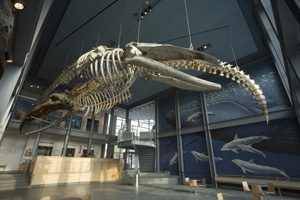
Location: New Bedford Description: Located along the working waterfront in downtown New Bedford, the Seaport Cultural District boasts historic charm, inspiration, and dynamic creativity inside and out. Cobblestone streets lead to the New Bedford Whaling National Park and the Whaling Museum, the Underground Railroad, and the legendary white whale, which inspired Herman Melville to sail from New Bedford and write Moby Dick. Learn more about the famous orator and abolitionist Frederick Douglass by visiting the Nathan and Polly Johnson House, Douglass' first free home after he escaped slavery. Peppered with art galleries and art studios, the Seaport Cultural District stands out for its appreciation of the arts: from AHA!, a year round free monthly celebration of Art, History, and Architecture, to the Zeiterion Performing Arts Center, also known as 'The Z,' which comes alive with spectacular performances night after night and is home to New Bedford Symphony Orchestra, New Bedford Festival Theatre, New Bedford Ballet, and Southcoast Children's Theatre. The New Bedford Art Museum showcases local Southcoast talent and is home to ArtWorks! The warmer months bring the arts outdoors. Festivals along the pier and throughout the district celebrate the multicultural heritage as well as creative present of the city including the Folk Festival, Jazz Festival, Taste of Southcoast, Wine Festival, Working Waterfront Festival, Oktoberfest, and the Summer Sound Series. In all, the New Bedford's Seaport Cultural District contains 49 cultural attractions, 29 creative economy businesses and is just one hour from Boston, and 30 minutes from Cape Cod, Plymouth, Providence and Newport. |
|
| Shelburne Falls Cultural District | Western |
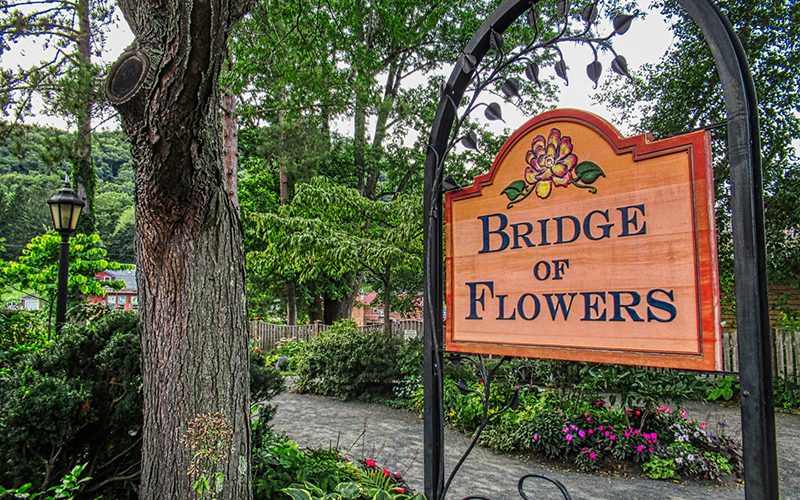
Location: Shelburne Description: This rural pairing of two villages -- Shelburne and Buckland -- on either side of the Deerfield River joined by an historic iron bridge is a delightful surprise. Honored as one of the 100 Best Small Art Towns in America the towns are recognized as a nationally desirable cultural destination. Shelburne Falls gets it all right -- preserving its historic, small town character while being open to the best of modern life. It is a village with a thriving cultural community nestled in the heart of farms and country roads. Enjoy world class opera in Memorial Hall's 1898 Met Live series. Visit eclectic art and crafts galleries and studios throughout the village. Enjoy the ambience of Mocha Maya's Coffee House offering live music year-round. The Bridge of Flowers, once a busy trolley bridge, is now a world famous garden. Visit the trolley museum, the candlepin museum, or the curious geological potholes. Linger in local eateries. Fun family-friendly fairs and festivals throughout the year celebrate the arts, culture, and nature of Shelburne Falls and the surrounding hill towns. |
|
| Shovel Town Cultural District | Southeast |
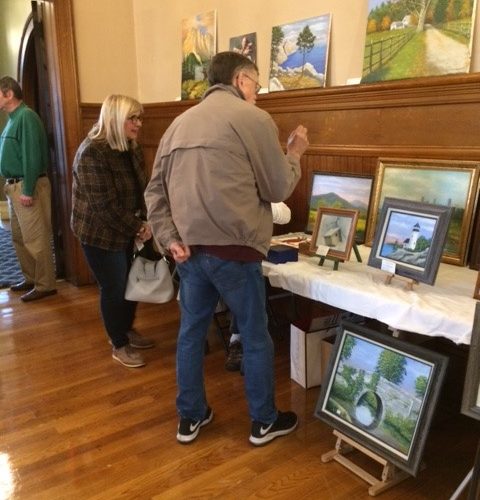
Location: Easton Description: This vibrant community is situated 45 minutes from Boston, Providence and Cape Cod and has been named twice by Money Magazine as one of the most desirable towns in the country to live.Easton is a community that values open space, historic assets and a rich culture. Easton's unique qualities can be greatly attributed to the Ames family, who settled the area and founded the Oliver Ames & Sons Shovel Works, a company that supplied shovels for the California Gold Rush, the American Civil War and the Transcontinental Railroad. 'The buildings of North Easton tell a special American story: a story about the dynamic relationship between and industrious and benevolent American family and America's most thoroughly national asset, its rich and abundant land,' (The Architect, His Peers and Their Era, Maureen Meister). The philanthropic Ames family, with its connections to politics, education and the arts, infused Easton with an enviable refinement, leaving behind a rich legacy. |
|
| Springfield Central Cultural District | Western |
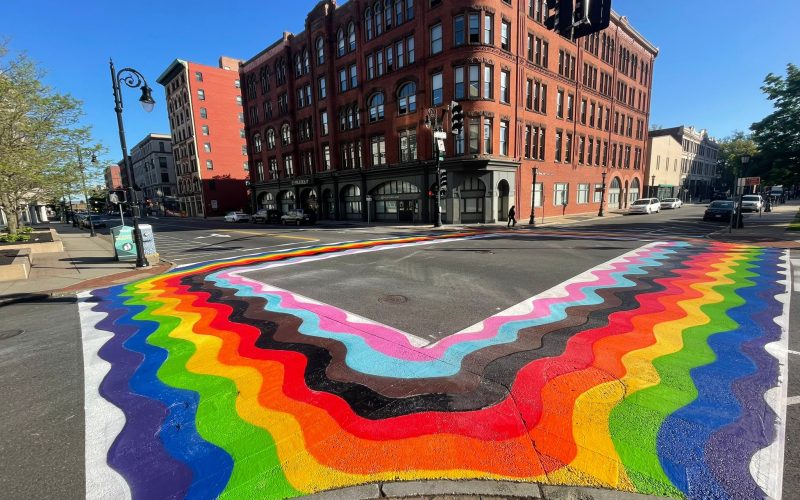
Location: Springfield Description: The Springfield Central Cultural District covers an architecturally impressive, compact, walkable area encompassing approximately 1/3 of a square mile of downtown Springfield, MA. The district is brimming with cultural attractions, a robust calendar of cultural planning, and a diverse roster of restaurants and eateries. |
|
| Turners Falls Cultural District | Western |
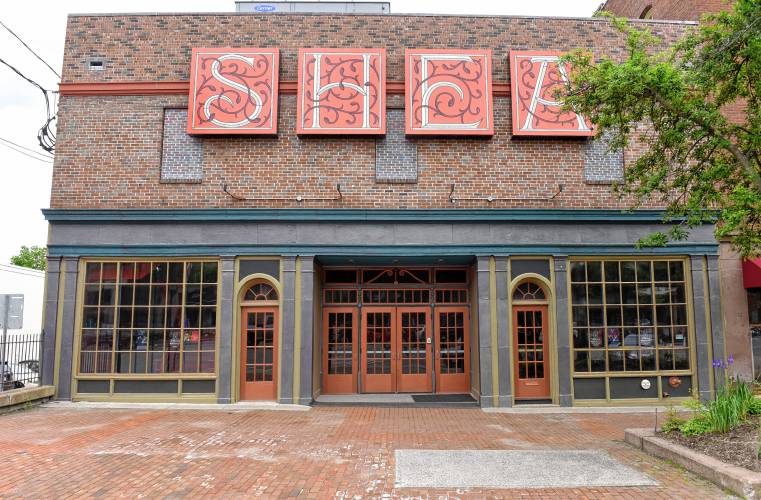
Location: Montague Description: Turners Falls is the largest of the five villages that comprise the Town of Montague -- nestled along the Connecticut River, just off the Mohawk Trail, the area is rich in history and culture including thousands of years of early Native American habitation. The Turners Falls Cultural District is energized by the same assets as in the past two centuries- the natural beauty of the river, well preserved architecture, and creative people who live and work in its downtown. The Gill-Montague Bridge serves as a gateway to the district and reveals stunning views of the village situated in a rustic landscape. Visitors are greeted by the gardens and rolling lawn of The Great Falls Discovery Center, which is housed within a complex of historic mill buildings. The Discovery Center exhibits the natural, cultural, and industrial history of the Connecticut River watershed. The Center's Great Hall, a former machine shop, regularly hosts art exhibits, educational programs and live music. |
|
| Upstreet Cultural District | Western |
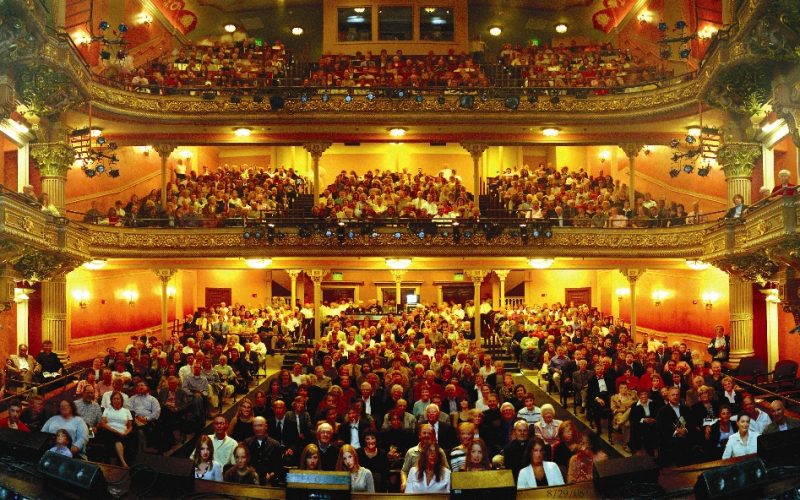
Location: Pittsfield Description: How do you decide among the 50 restaurants, wine bars, and cafes that populate the Upstreet Cultural District? A calendar chock full of events and celebrations that regularly fill the street with vendors and artists that will tempt your aesthetic and culinary taste buds. This vibrant district will lure you into its amazing theater scene and to its family-friendly Berkshire Museum. Upstreet is home to dozens of visual, performing, and literary artists and numerous cultural institutions, including the Barrington Stage Company and its Musical Theatre Lab, the Hancock Shaker Village, and the beautifully restored Colonial Theatre. The district also boasts a number of locally-run retail shops, art galleries, a diverse selection of ethnic restaurants, and a year-round calendar of events and celebrations like 3rd Thursdays and the WordXWord Festival. |
|
| Vineyard Haven Harbor Cultural District | Southeast |

Location: Tisbury Description: The Vineyard Haven Harbor Cultural District is a walkable, charming village, pristine harbor and working waterfront - all part of a premier center of art and culture for Island residents and visitors. Vineyard Haven is the year-round gateway to Martha's Vineyard. Arriving on the ferry, you disembark right in the center of the cultural district, where a colorful mural welcomes you to our town, a special place that celebrates arts, culture and the seafaring life throughout the seasons. The cultural district comprises dynamic arts destinations including the historic Martha's Vineyard Playhouse, a renowned professional theater; the celebrated independent book store, Bunch of Grapes; the illustrious Vineyard Haven Library and the popular MV Film Center.On every corner, you will discover top-class artisans, jewelers, galleries, clothing designers and a wealth of local businesses, lodgings and eateries -- all in this appealing and accessible district surrounding our splendid harbor. The William Street Historic District is a key stop. Gaze at beautifully maintained captain's homes, where they have stood proudly for generations. These captains sailed in and out of the same harbor where thousands of vessels anchor today. Vineyard Haven Harbor has always been one of the most lively and treasured ports in New England, especially for wooden boats. Wooden vessels have been designed and built here for centuries; currently and most notably at the world renowned Gannon & Benjamin Marine Railway. A strong maritime history, and the vibrancy and sheer volume of our treasured creative establishments, are reasons to celebrate this unique island district. |
|
| Watertown Cultural District | Greater Boston |
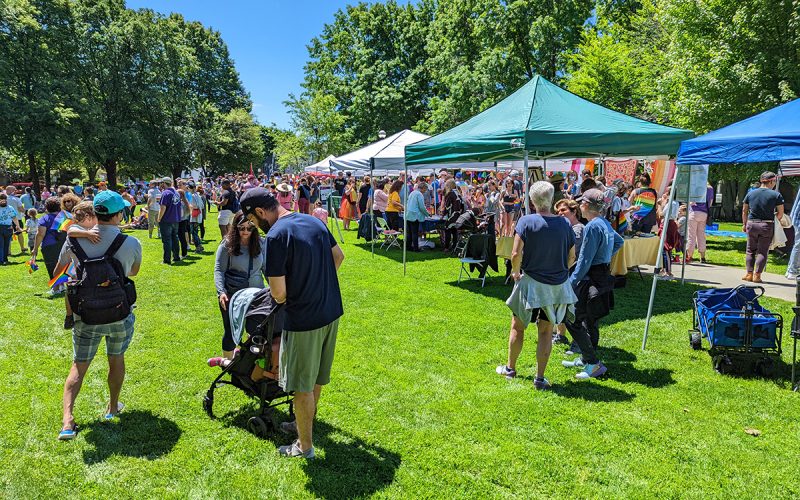
Location: Watertown Description: Situated on the Charles River just minutes from Boston, Watertown, MA, has emerged as a vibrant cultural destination, thanks to a rich tapestry of arts and cultural organizations. The Mosesian Center for the Arts, a multidisciplinary venue, offers a diverse range of performances, exhibitions, and educational programs. The Watertown Free Public Library provides a variety of community programs, including the Hatch Makerspace. The Watertown Public Arts and Culture Committee promotes public art and cultural initiatives, while the Watertown Cultural Council supports local arts programs through grants. The Historical Society of Watertown preserves and shares the town's history, and the Armenian Museum of America showcases Armenian culture and heritage. These organizations, along with the Watertown Business Coalition and Watertown Cable Access Corp, contribute to the town's vibrant cultural scene. Additionally, organizations like AANE, Project Save Photograph Archives, the Armenian Cultural and Educational Center, Perkins School for the Blind, Mount Auburn Cemetery, World in Watertown, and the Watertown Music Foundation offer unique cultural experiences and programs. |
|
| Wellfleet Cultural District | Southeast |
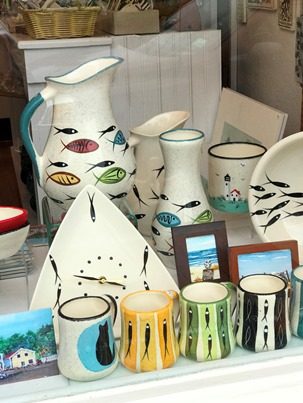
Location: Wellfleet Description: The Town of Wellfleet is a historic seaside village on the Outer Cape, located between the Atlantic Ocean and Cape Cod Bay, consisting of South Wellfleet, Wellfleet Harbor and the downtown village (Main Street). Once an important port for both whaling and the early banana trade, the Town of Wellfleet remains today deeply connected to the sea through the local shellfishing and aquaculture industry. The famed Wellfleet Oyster is prized nationally and internationally. Wellfleet's natural landscape of moors, marshes, towering dunes and crystal clear fresh water ponds left by retreating glaciers centuries ago, has been protected since 1961 with the establishment of the Cape Cod National Seashore. Walking trails abound -- Great Island, the Atlantic White Cedar Swamp, Duck Harbor, Bound Brook Island and the Audubon Society's Wellfleet Bay Wildlife Sanctuary. The 23-mile long Cape Cod Rail Trail bike path ends in South Wellfleet at the Wellfleet Chamber of Commerce Information booth. Outlying cultural sites include the Wellfleet Harbor Actors Theater, the Harbor Stage Company, the newly restored Pond Hill School and the Atwood-Higgins house maintained by the National Park Service. |
|
| West Concord Junction Cultural District | Metrowest |
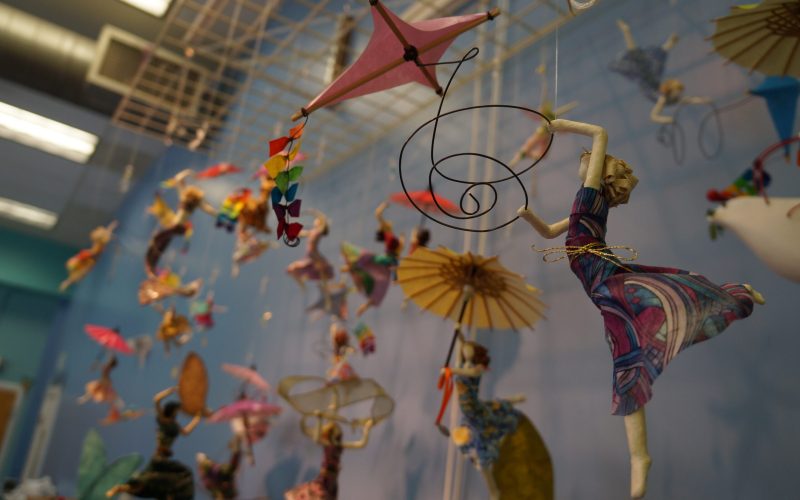
Location: Concord Description: While historically a significant railroad junction community, West Concord today is much more than that -- it is a junction of rivers, trails, historic buildings, businesses, artists, and cultural organizations that make up a unique setting in Boston's MetroWest region. Stop into shops like noa Designs, Concord Outfitters, Firefly, Forever Tile, Phillips Fine Paint and Design, and the award-winning Debra's Natural Gourmet to find a variety of practical items and gifts. Merlin's Silver Star Studio, Three Stones Gallery, Robin Original Studio, and Brock & Co. Gallery can satisfy any art shopper, while the charming West Concord Five and Dime has everything you've been looking for (and more!). Culture seekers will revel in the performances, concerts, classes and workshops presented by the Concord Youth Theatre, Concord Conservatory of Music, West Concord Dance Academy, and Dance Prism. Summer visitors can enjoy a film series at Rideout Park, while the local ice cream shop hosts open mic nights and small concerts year-round. Visitors can treat their taste buds with dining experiences at Saltbox Kitchen and Woods Hill Table that offer exquisite farm-to-table experiences. Twin Seafood is a must for lovers of fresh seafood, while Nashoba Brook Bakery and Concord Teacakes satisfy the sweet tooth in all of us with delicious pastries and sweets.Bradford Mill, on the site of the former Allen Chair Company, brings the Junction's past into the present as a home for a shared-workplace complex, small entrepreneurial work spaces, and ArtScape -- a studio and gallery space for 20 cool and contemporary artists worth visiting. |
|
| Williamstown Cultural District | Western |
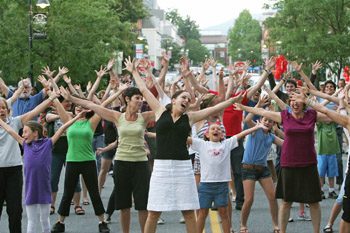
Location: Williamstown Description: Williamstown, nestled in the northwest corner of Massachusetts, is, according to the New York Times, 'one of the loveliest communities in New England.' Home to Williams College, the Clark Art Institute, Williams College Museum of Art, Williamstown Theatre Festival, and access to the Appalachian Trail and Mt. Greylock, Massachusetts' highest peak, the town is unique in its mix of extraordinary art, theater, ideas, history, and nature. Given its location in the Berkshires, it is a vibrant four-seasons cultural and outdoors destination.The district's engaged intellectual community centers around the world-renowned liberal arts college that occupies first place in the U.S. News & World Report 2014 ranking. Williamstown's cultural assets run deep, from historic homes, to family-owned farms, four outstanding libraries, and one of the few remaining single-screen, independent movie theaters still in operation. Spring Street, the commercial center, contains galleries, fashion shops, a vibrant coffee shop, and a myriad of restaurants that cater to the tastes of college students and locals.Visitors travel from all over the globe to experience The Clark's exceptional collections in an intimate setting, groundbreaking special exhibitions, and striking architecture by Pritzker prize winner Tadao Ando. The Williams College Museum attracts those interested in modern, contemporary, American, and world art. The Williamstown Theatre Festival presents Tony award-winning summer theater, featuring celebrated designers, composers, directors, choreographers, and actors on two stages at the state-of-the-art 62 Center at Williams -- all located in a setting of great natural beauty. |
|
| Winchester Cultural District | Metrowest |

Location: Winchester Description: Settled by Europeans beginning in 1638 on land purchased from the Native Americans, Winchester was a small village on the Aberjona River. The Middlesex Canal ran through it in the early 19th century when the railroad supplanted it and built two stations in the downtown area which are still in use today and located within the proposed cultural district. The train has been a major planning conduit since the 1800s and inspired the layout, design, and development of the neighborhood within walking distance to the two stations. The train along with the river defined the town center, open green space, and fields which are all located within the proposed district. Winchester, formerly part of Woburn until breaking off and incorporating in 1850, through the centuries has maintained its downtown village look and feel, and it draws residents to historical, cultural, and dining facilities where old and new residents mix and mingle. Along with a planned renovation to the train station, newly created Central Business District zoning is now in place in place to attract development that will bring residential and retail to the downtown while maintaining the village context. |
|


